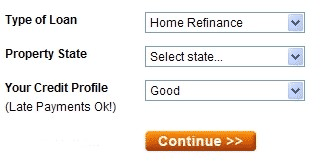Bad Credit Mortgage Basics
Bad credit mortgage loans are for borrowers who have credit issues and do not fit traditional mortgage credit standards. Bad credit mortgage programs are also known as B paper or subprime loans.
Bad credit mortgage lenders create loan programs with their own riskier underwriting standards combined with higher rate structures and then pool them for sale to final investors (ie. mutual funds, insurance companies, foreign banks, etc). These final investors take on the long term risk associated with lending large sums to those with less than perfect credit.
To entice investors subprime loans must offer financial incentives to attract the investment dollars. Bad credit mortgage commonalities that yield greater rates of return for investors are : higher rates, adjustable rates and pre-payment penalties.
A bad credit mortgage carries a higher rate. You can’t get around that.
It doesn’t mean you’re being punished for your mistakes. It’s just a riskier loan so the lender needs a higher rate of return (your interest rate) for taking on the risk of lending you their money. You need to keep an eye on the loan officer, however. Ask them point blank what fees go directly to them and also how much they will make by increasing your rate above what is required by the bad credit mortgage.
Virtually all bad credit mortgages are sold as an adjustable rate mortgages. They are known as a 2/28 or 3/27. This means your rate stays fixed for 2 or 3 years and then adjusts for the remaining 28 or 27. An adjustable rate loan has two parts. One is the margin (stays the same) and the other is the index (moves up and down). Your rate is calculated by adding the margin to the index. The index most often used on these is the LIBOR. Unfortunately, it’s one of the most volatile. You can guarantee when the fixed period is up, your rate will rise and not just a little…a lot!
Your introductory fixed period doesn’t make the lender the big money…it’s when the loan adjusts and your payment goes up $300 or $400! You may have 7.5% introductory rate and when it starts to adjust, it could go to 10%.
That’s why the lender puts the pre-payment penalty on these. They won’t make enough money with the introductory rate so if you pay off during that time; they want the rest of their profit.
Every bad credit mortgage will have a pre-payment penalty. If you pay the loan off before your pre-payment penalty is up, you owe the lender money. Usually, it’s six months of interest. Pre-payment penalties are usually 1, 2, 3, and 5 years in duration.
You can get a bad credit home mortgage from a mortgage broker a mortgage bank. For example, if you need a California bad credit mortgage there are small companies just licensed in California you could use. Or you may see advertisements for larger national companies licensed in many states. Either type of retail option has access to bad credit mortgage products, but they are dwindling fast.
So seek out an experienced bad credit mortgage broker and hold their feet to the fire for a fair deal.
These loans are losing favor with investors due to the high foreclosure rates showing up after an unbridled explosion in subprime lending and the subsequent bad credit mortgage meltdown. So if you need a bad credit mortgage, hurry before all the lenders leave the market!
Good Luck!
UPDATE 8/12/2010: These bad credit loans are gone. However, the FHA loan programs have the closest thing to subprime underwriting parameters. So much so the HUD Secretary Chairman is sounding the alarm over turning FHA into a subprime dumping ground.
Previous Post:« Mortgage Application Anxiety
Next Post:» 100 Percent Mortgage Pros and Cons
Tags: Bad Credit Mortgage • Credit Issues • Loan Programs • Subprime Lenders • Subprime Mortgages


Leave a Reply